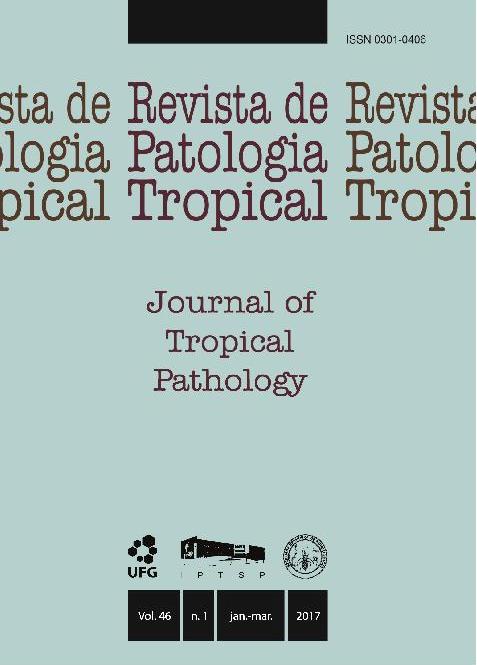PREVALENCE OF PARASITES WITH ZOONOTIC POTENTIAL IN SOIL FROM THE MAIN PUBLIC PARKS AND SQUARES IN CAXIAS DO SUL, RS, BRAZIL
DOI:
https://doi.org/10.5216/rpt.v46i1.46294Keywords:
Parasites, enteroparasites, public health, environment.Abstract
Soil contamination in parks and public squares caused by animal feces has been one of the main forms of parasitic contamination, becoming therefore a public health problem. The purpose of this study was to determine the prevalence of parasites in the soil in major parks and public squares in Caxias do Sul, RS, Brazil. Two samplings were performed at each location, the first
in summer (February) and the second in winter (July) in 2015. Soil samples were collected in five spots in ten parks/public squares, per season and examined using the Hoffman, Pons & Janer (HPJ), Faust and Rugai, Mattos and Brisola methods. Among the 100 samples analyzed by HPJ and Rugai, Mattos and Brisola, 64% and 58% respectively, proved positive in summer
and 28% and 60% in winter. The Faust method showed the same number of positive samples in both seasons (12% each). The following parasites were found: Cystosospora sp oocysts (4%), Entamoeba coli cysts (1%), Strongyloides stercoralis suggestive larvae (0.3%), Endolimax nana
cysts (1%) and Ancylostoma sp suggestive larvae (33.3%) with the highest prevalence. Both parks and squares presented parasites with zoonotic potential. Thus, it is necessary to highlight the importance of educational measures regarding the use of these locations as well as the cleaning of public areas with the removal of animal excrements.
Downloads
Downloads
Published
How to Cite
Issue
Section
License
The manuscript submission must be accompanied by a letter signed by all authors stating the full name and email address, confirming that the material has not been published or is under consideration for publication elsewhere, and agreeing to transfer copyright in all media and formats for Journal of Tropical Pathology. The authors will not be paid for published articles. They are solely responsible for the content of those articles, even if the Editor holds the right to adjust them to the norms of the journal.
The reviewers will not be paid for the peer review process.

